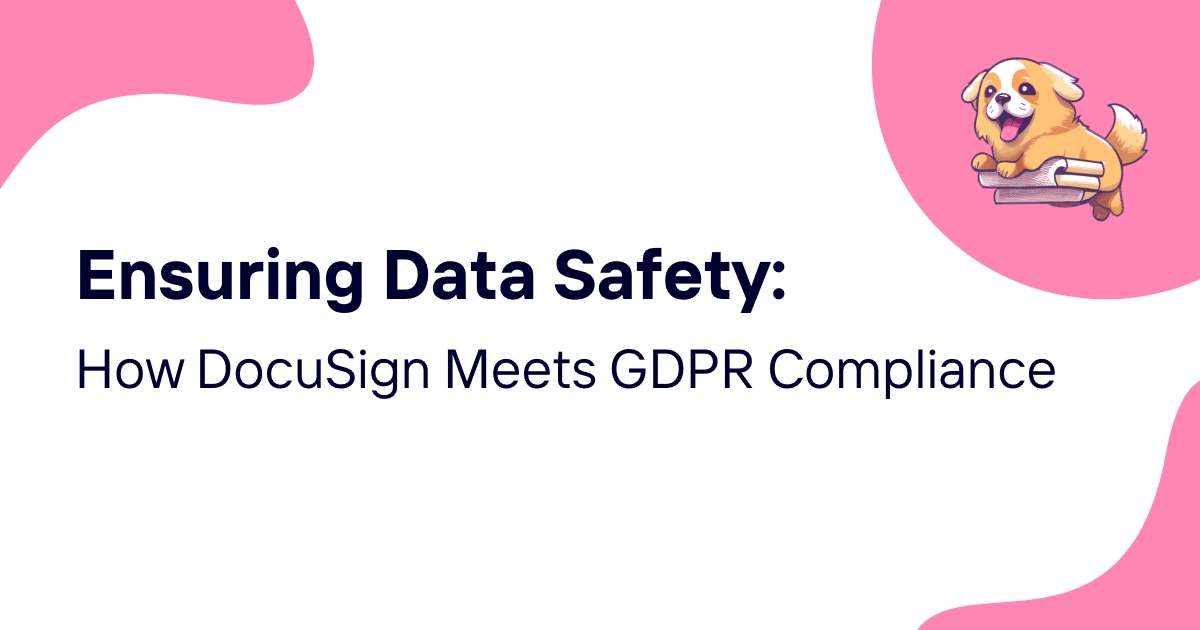Data exists in multiple forms across every business operation. The concept of data dimensions helps organizations understand how information flows, connects, and creates value within their systems.
Think of data dimensions like the blueprint of a house – you need to know the length, width, and height before you can build anything meaningful. Similarly, businesses must grasp the various aspects of their data before they can make informed decisions or ensure compliance with regulations like GDPR.
This analysis becomes particularly important when companies handle personal information from EU citizens. The structure and characteristics of data directly impact how organizations approach privacy protection and regulatory compliance.
Table of Contents
- What are data dimensions?
- The four primary dimensions of data
- Temporal dimensions in data analysis
- Spatial dimensions and geographic data
- Hierarchical data structures
- Data quality dimensions
- Privacy and security dimensions
- Business intelligence perspectives
- Technical implementation considerations
- Compliance implications
- Future trends in data dimensionality
What are data dimensions?
Data dimensions represent the different perspectives through which information can be analyzed, organized, and understood. Each dimension provides a unique lens for examining data characteristics, relationships, and patterns.
Consider a customer database. The dimensional view might include:
- Personal attributes (name, age, location)
- Behavioral patterns (purchase history, website interactions)
- Temporal aspects (when activities occurred)
- Categorical groupings (customer segments, product preferences)
These dimensions work together to create a comprehensive picture of the information landscape. But here's where it gets interesting – and slightly complicated.
Different industries define data dimensions in various ways. A retail company might focus on sales dimensions (time, product, geography, customer). A healthcare organization could emphasize patient demographics, treatment outcomes, and temporal progression.
The beauty lies in how these dimensions intersect and influence each other. Change one dimension, and you might discover entirely new insights hiding in plain sight.
The four primary dimensions of data
Most data professionals recognize four fundamental dimensions that appear across virtually every information system:
Volume dimension
Volume represents the sheer quantity of data an organization collects, stores, and processes. This dimension has exploded in recent years as digital interactions multiply exponentially.
Small businesses might handle gigabytes of customer information. Enterprise organizations often manage petabytes or even exabytes of data across multiple systems and platforms.
Volume creates both opportunities and challenges. More data can lead to better insights, but it also increases storage costs, processing time, and compliance complexity. GDPR, for instance, requires organizations to demonstrate they're not collecting excessive personal data – regardless of their storage capacity.
Velocity dimension
Velocity describes how quickly data flows into and through organizational systems. Some information arrives in real-time streams (website clicks, sensor readings, transaction records), while other data accumulates more slowly (annual surveys, quarterly reports).
Financial trading systems process thousands of transactions per second. Social media platforms handle millions of posts, comments, and interactions continuously. Each velocity tier demands different technical approaches and business strategies.
The velocity dimension becomes particularly relevant for privacy compliance. GDPR requires organizations to respond to data subject requests within 30 days. High-velocity data environments must balance rapid processing with accuracy and legal obligations.
Variety dimension
Variety encompasses the different types and formats of data within an organization's ecosystem. This dimension has expanded dramatically as businesses adopt diverse technologies and communication channels.
Traditional structured data (databases, spreadsheets) now coexists with:
- Unstructured text (emails, social media posts, documents)
- Multimedia content (images, videos, audio files)
- Semi-structured formats (JSON, XML, log files)
- Sensor data (IoT devices, mobile applications)
Each variety requires specific handling, analysis, and protection methods. Personal data might exist in customer service chat logs, support ticket attachments, or embedded within application databases.
Veracity dimension
Veracity addresses data quality, accuracy, and trustworthiness. This dimension often receives less attention than volume, velocity, or variety – but poor veracity can undermine entire analytical efforts.
Data quality issues include:
- Completeness gaps (missing customer contact information)
- Accuracy problems (outdated addresses, incorrect categorizations)
- Consistency conflicts (different naming conventions across systems)
- Timeliness concerns (historical data presented as current)
High veracity becomes crucial for regulatory compliance. Inaccurate personal data can trigger GDPR violations, while poor data quality makes it difficult to fulfill data subject rights effectively.
Temporal dimensions in data analysis
Time adds complexity to every data dimension. Information ages, becomes outdated, and develops historical context that impacts its value and relevance.
Temporal dimensions manifest in several ways:
Historical data layers
Organizations accumulate data over months, years, or decades. This historical information can reveal trends, seasonal patterns, and long-term business cycles. However, older data might become less relevant or accurate as circumstances change.
Customer preferences evolve. Product catalogs shift. Market conditions fluctuate. Analyzing temporal dimensions helps businesses distinguish between temporary anomalies and genuine trend changes.
Real-time processing requirements
Some business processes depend on immediate data availability. Fraud detection systems must identify suspicious transactions within seconds. Inventory management requires up-to-date stock levels to prevent overselling.
Real-time temporal dimensions create technical challenges around data synchronization, system reliability, and processing capacity. They also introduce privacy considerations when personal data flows through multiple systems simultaneously.
Data lifecycle management
Every piece of information follows a lifecycle from creation to deletion. Understanding temporal dimensions helps organizations implement appropriate retention policies, archival strategies, and disposal procedures.
GDPR mandates that personal data should not be kept longer than necessary for its original purpose. Temporal dimension analysis helps identify when information reaches the end of its useful lifecycle and should be securely deleted.
Spatial dimensions and geographic data
Geographic information adds another layer of complexity to data architecture. Spatial dimensions capture where events occur, where customers live, where services are delivered, and where regulations apply.
Geographic segmentation
Location-based data enables sophisticated customer segmentation and market analysis. Companies can identify regional preferences, target location-specific marketing campaigns, and optimize service delivery networks.
Spatial dimensions also impact regulatory compliance. GDPR applies to personal data of EU residents, regardless of where the processing organization is located. Understanding geographic dimensions helps businesses determine which regulations apply to specific data sets.
Privacy implications of location data
Geographic information often qualifies as personal data under privacy regulations. GPS coordinates, IP addresses, and even postal codes can reveal sensitive details about individual behavior and preferences.
Mobile applications frequently collect location data for legitimate business purposes (navigation, local recommendations, delivery tracking). However, this spatial information requires careful protection and transparent disclosure to users.
Cross-border data considerations
Spatial dimensions become particularly complex when data crosses international boundaries. Different countries maintain varying privacy laws, data protection requirements, and transfer restrictions.
Organizations must map their data flows geographically to ensure compliance with applicable regulations in each jurisdiction. This spatial analysis helps identify potential legal risks and implement appropriate safeguards.
Hierarchical data structures
Many datasets contain natural hierarchies that create additional dimensional complexity. These nested relationships appear across industries and data types.
Organizational hierarchies
Corporate structures create multi-level data relationships:
- Company divisions and departments
- Management reporting chains
- Geographic regional structures
- Product category taxonomies
Each hierarchical level might require different access controls, processing procedures, or privacy protections. A regional manager might need access to local customer data but not sensitive information from other regions.
Taxonomical classifications
Product catalogs, service categories, and content classification systems often follow hierarchical patterns. These structures help organize information but can create challenges when categories overlap or change over time.
Search engines use hierarchical data to improve result relevance. E-commerce platforms rely on product hierarchies for navigation and recommendation algorithms. Each level of hierarchy adds dimensional complexity to data analysis and processing.
Permission and access hierarchies
Security systems frequently implement hierarchical access controls based on user roles, data sensitivity, and business requirements. These permission structures create dimensional relationships between users, data, and system functions.
Understanding hierarchical dimensions helps organizations implement effective data governance while maintaining appropriate privacy protections.
Data quality dimensions
Data quality represents a multi-faceted dimension that impacts every aspect of information management. Poor quality data can undermine business decisions, create compliance risks, and erode customer trust.
Accuracy assessment
Accurate data reflects reality without errors or distortions. This dimension becomes particularly important for personal information, where inaccuracies can impact individual rights and business relationships.
Common accuracy issues include:
- Typographical errors in customer names or addresses
- Outdated contact information
- Incorrect categorizations or classifications
- Data entry mistakes during collection processes
Regular accuracy assessments help identify and correct quality problems before they propagate through organizational systems.
Completeness evaluation
Complete data contains all required elements for its intended purpose. Missing information can create gaps in analysis, prevent effective decision-making, and complicate compliance efforts.
Completeness challenges often arise when:
- Customers provide partial information during registration
- Data integration processes fail to merge all relevant fields
- Legacy systems contain incomplete historical records
- Optional form fields remain unfilled
Understanding completeness dimensions helps organizations prioritize data collection efforts and identify critical information gaps.
Consistency maintenance
Consistent data follows standardized formats, naming conventions, and validation rules across all systems and processes. Inconsistencies create confusion, reduce analytical accuracy, and complicate system integration efforts.
Examples of consistency problems:
- Different date formats across systems (MM/DD/YYYY vs DD/MM/YYYY)
- Varying customer naming conventions (formal vs abbreviated forms)
- Inconsistent categorical labels for similar items
- Conflicting data values between integrated systems
Maintaining consistency requires ongoing attention to data standards and validation procedures.
Privacy and security dimensions
Privacy and security considerations create additional dimensions that impact how organizations collect, process, store, and share information. These dimensions have gained prominence with increased regulatory scrutiny and consumer awareness.
Sensitivity classification
Different types of data require varying levels of protection based on their sensitivity and potential impact if compromised. Understanding sensitivity dimensions helps organizations implement appropriate security controls.
Common sensitivity classifications include:
- Public information (marketing materials, published reports)
- Internal data (employee directories, operational procedures)
- Confidential information (customer records, financial data)
- Restricted data (personal health information, government records)
Each sensitivity level requires specific handling procedures, access controls, and protection measures.
Consent and permission tracking
Privacy regulations require organizations to track how individuals have consented to data processing activities. This consent dimension creates complex relationships between individuals, data types, and business processes.
Consent tracking involves:
- Recording when and how consent was obtained
- Documenting specific purposes for data processing
- Maintaining withdrawal mechanisms for individuals
- Linking consent status to data processing activities
These dimensional relationships become crucial for demonstrating regulatory compliance and respecting individual privacy rights.
Data subject rights management
Privacy regulations grant individuals specific rights regarding their personal data. Managing these rights creates dimensional relationships between individuals, their data, and organizational processes.
Key data subject rights include:
- Access rights (individuals can request copies of their personal data)
- Rectification rights (correction of inaccurate information)
- Erasure rights (deletion of personal data under certain circumstances)
- Portability rights (transfer of data to other organizations)
Each right requires different technical capabilities and process procedures, creating complex dimensional relationships across organizational systems.
Business intelligence perspectives
Data dimensions play a crucial role in business intelligence and analytical systems. These perspectives help organizations extract meaningful insights from complex information landscapes.
Analytical cube structures
Business intelligence systems often organize data into multi-dimensional cubes that enable sophisticated analysis and reporting. These structures combine various dimensional perspectives to reveal patterns and trends.
A typical sales analysis cube might include:
- Time dimensions (years, quarters, months, days)
- Geographic dimensions (countries, regions, cities)
- Product dimensions (categories, brands, individual items)
- Customer dimensions (segments, demographics, behaviors)
Each intersection of these dimensions reveals specific insights about business performance and customer behavior.
Key performance indicator relationships
Performance metrics often depend on multiple dimensional relationships. Understanding these connections helps organizations develop meaningful measurement frameworks and identify improvement opportunities.
For example, customer satisfaction might correlate with:
- Response time dimensions (how quickly support requests are resolved)
- Product quality dimensions (defect rates, reliability measures)
- Service delivery dimensions (accuracy, completeness, timeliness)
Analyzing these dimensional relationships helps businesses optimize performance across multiple areas simultaneously.
Predictive modeling applications
Machine learning and predictive analytics systems rely on dimensional relationships to identify patterns and forecast future outcomes. These models combine historical data dimensions with real-time information to generate actionable predictions.
Predictive applications might analyze:
- Customer behavior dimensions to forecast purchasing patterns
- Market trend dimensions to predict demand fluctuations
- Operational efficiency dimensions to optimize resource allocation
Understanding dimensional relationships helps improve model accuracy and business value.
Technical implementation considerations
Implementing effective data dimension management requires careful attention to technical architecture, system design, and operational procedures.
Storage architecture decisions
Different dimensional characteristics require different storage approaches. Understanding these technical relationships helps organizations optimize system performance and cost efficiency.
Storage considerations include:
- Relational databases for structured, transactional data with complex relationships
- Document stores for semi-structured information with flexible schemas
- Data warehouses for analytical workloads requiring dimensional analysis
- Object storage for unstructured content like images and documents
Each storage technology excels with specific dimensional characteristics and use cases.
Integration complexity management
Modern organizations typically maintain multiple systems that each handle different dimensional aspects of their data. Integrating these systems creates technical challenges around data synchronization, format standardization, and quality maintenance.
Integration approaches include:
- Extract, Transform, Load (ETL) processes for batch data movement
- Real-time streaming for immediate data synchronization
- API-based integration for system-to-system communication
- Data federation for virtual integration without data movement
Choosing appropriate integration strategies depends on dimensional requirements, system capabilities, and business objectives.
Performance optimization strategies
Large-scale dimensional analysis can create significant computational demands. Understanding performance implications helps organizations design efficient systems that deliver timely results.
Optimization techniques include:
- Indexing strategies to accelerate dimensional queries
- Partitioning approaches to distribute data across multiple storage devices
- Caching mechanisms to reduce repetitive processing overhead
- Parallel processing to handle multiple dimensional analyses simultaneously
Balancing performance with cost and complexity requires ongoing attention to system metrics and user requirements.
Compliance implications
Data dimensions have significant implications for regulatory compliance, particularly with privacy regulations like GDPR. Understanding these relationships helps organizations build compliant systems and processes.
Data mapping requirements
Privacy regulations require organizations to document what personal data they collect, how it flows through their systems, and who has access to it. This mapping process involves analyzing multiple dimensional relationships.
Effective data mapping includes:
- Source identification (where personal data originates)
- Processing documentation (how data is used and transformed)
- Storage locations (where information resides across systems)
- Access controls (who can view or modify specific data types)
- Retention periods (how long different data types are kept)
These dimensional relationships form the foundation for privacy compliance programs.
Rights fulfillment processes
Individual privacy rights create operational requirements that span multiple dimensional aspects of data management. Organizations must be able to locate, extract, modify, or delete personal data across all systems and processes.
Rights fulfillment involves:
- Data discovery across multiple systems and formats
- Identity verification to ensure requests come from legitimate individuals
- Impact assessment to understand downstream effects of data changes
- Process coordination across different business units and technical systems
Building effective rights fulfillment capabilities requires comprehensive understanding of organizational data dimensions.
Audit and accountability measures
Regulatory compliance requires ongoing monitoring and documentation of data processing activities. These accountability measures depend on dimensional analysis to demonstrate compliance with privacy requirements.
Audit capabilities include:
- Activity logging to track data access and modification events
- Policy enforcement monitoring to verify compliance with established procedures
- Risk assessment processes to identify potential privacy vulnerabilities
- Incident response procedures to address data breaches or compliance violations
Effective audit systems require integration across multiple dimensional aspects of organizational data management.
Future trends in data dimensionality
Data dimensions continue to evolve as new technologies, business models, and regulatory requirements emerge. Understanding these trends helps organizations prepare for future challenges and opportunities.
Artificial intelligence integration
Machine learning systems are adding new dimensional complexity to organizational data landscapes. AI models require training data, generate prediction outputs, and create feedback loops that impact business processes.
AI-related dimensions include:
- Training data provenance (where machine learning data originates)
- Model performance metrics (accuracy, bias, fairness measures)
- Prediction confidence levels (uncertainty quantification)
- Algorithmic decision documentation (explainability requirements)
These AI dimensions create new compliance obligations and technical challenges for organizations implementing automated decision-making systems.
Internet of Things expansion
Connected devices are generating massive volumes of sensor data with unique dimensional characteristics. IoT information often includes real-time streams, geographic coordinates, and device-specific attributes.
IoT dimensional considerations:
- Temporal precision (microsecond-level timing information)
- Spatial accuracy (precise location coordinates)
- Device identity (unique identifiers for specific sensors)
- Environmental context (surrounding conditions during data collection)
Managing IoT dimensions requires new technical approaches and privacy considerations as sensor data often contains personal information.
Blockchain and distributed systems
Distributed ledger technologies are creating new dimensional relationships around data immutability, consensus mechanisms, and decentralized storage. These systems challenge traditional approaches to data modification and deletion.
Blockchain dimensions include:
- Transaction sequencing (chronological ordering of data changes)
- Consensus verification (distributed agreement on data validity)
- Immutability constraints (restrictions on data modification or deletion)
- Network governance (distributed decision-making about system changes)
Understanding blockchain dimensions becomes important as organizations explore distributed systems for data management and privacy protection.
Building compliant data architectures
Managing data dimensions effectively requires comprehensive approaches that balance business objectives with regulatory requirements. Organizations need tools and processes that can handle dimensional complexity while maintaining privacy protection.
Compliance software platforms help organizations analyze their data dimensions, implement appropriate controls, and demonstrate regulatory compliance. These systems provide centralized visibility into data flows, processing activities, and privacy protection measures.
ComplyDog offers comprehensive GDPR compliance capabilities that address multiple dimensional aspects of data management. The platform helps organizations map their data flows, implement privacy controls, and fulfill individual rights across all systems and processes. By providing automated tools for dimensional analysis and compliance monitoring, ComplyDog enables businesses to manage complex data landscapes while meeting regulatory requirements effectively.
Visit ComplyDog.com to learn how automated compliance tools can help your organization manage data dimensions while ensuring GDPR compliance across all business operations.

















